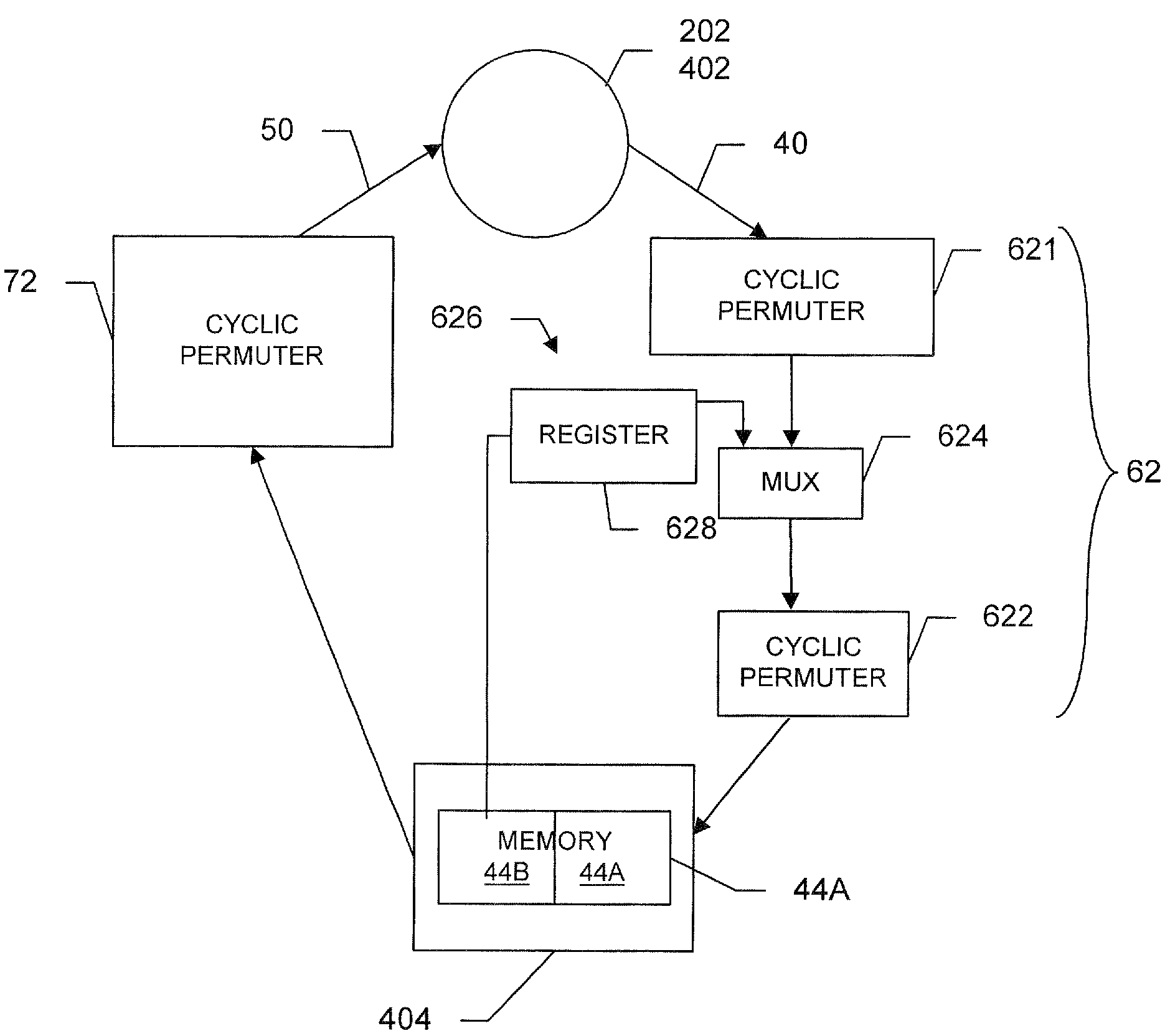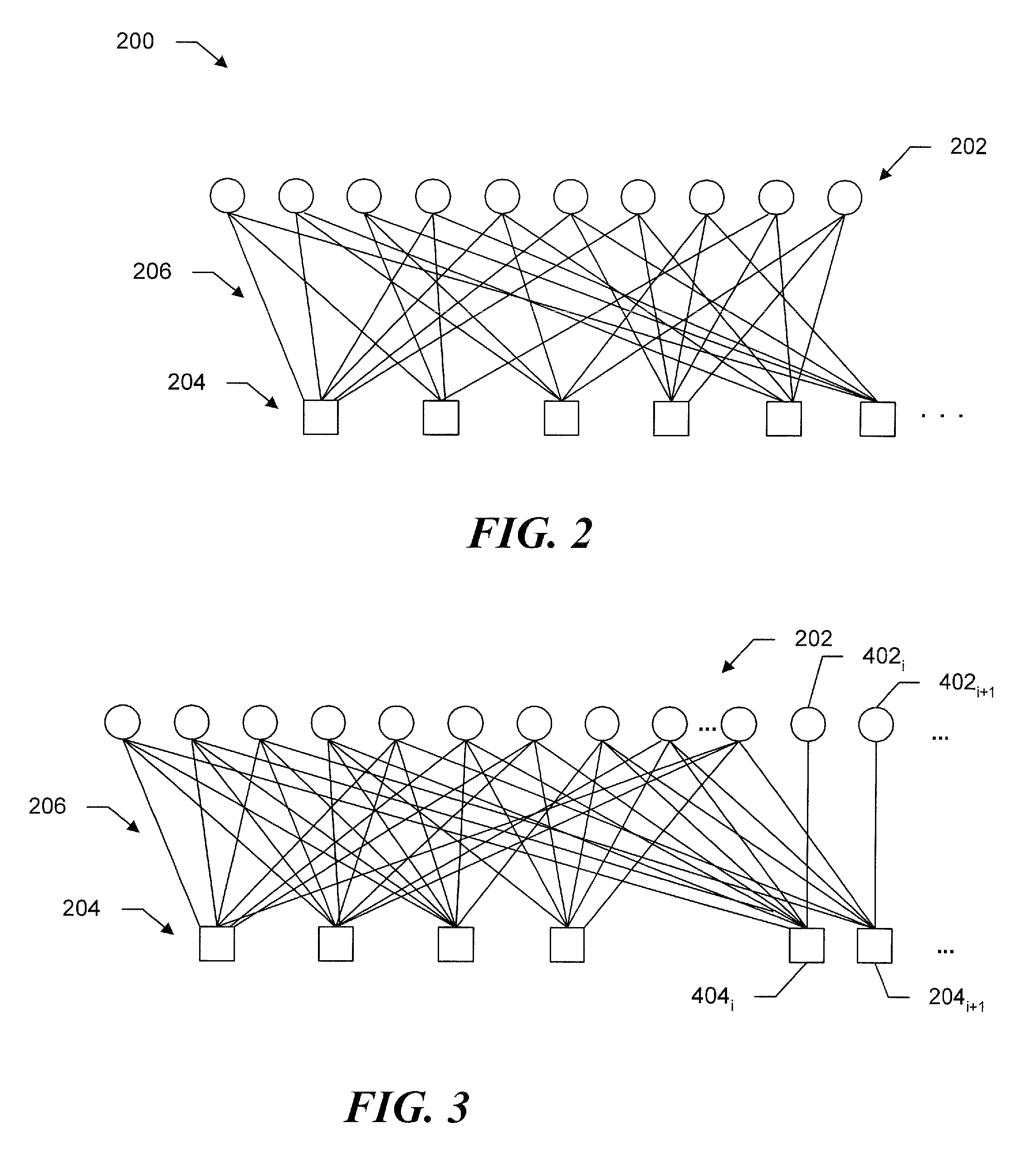Node processor for use with low density parity check decoder using multiple variable node degree distribution codes
a node processor and low density parity technology, applied in the field of node processors for low density parity check decoders, can solve the problems of relatively high error floor or sector failure rate of ldpcs, which remain relatively constan
- Summary
- Abstract
- Description
- Claims
- Application Information
AI Technical Summary
Problems solved by technology
Method used
Image
Examples
Embodiment Construction
[0016]Referring to FIG. 1, a decoding system includes an intersymbol interference (ISI) detector 102, such as a Soft Output Viterbi detector (SOVA), and an iterative decoder 104, referred to in the drawing as an LDPC decoder. The detector 102 receives a block of code word data from a magnetic recording channel (not shown) and in a known manner provides corresponding soft information to the LDPC decoder. A system processor 106 controls the LDPC decoder to operate the decoder utilizing selected variable node degree distribution LDPC codes. As appropriate, the decoder, under the control of the system processor 106, may also utilize LDPC codes and one or more concatenated single parity codes (SPCs). For ease of understanding, the operations of the LDPC decoder and associated node processors (FIGS. 4-6) are described with reference to a system that utilizes an LDPC code and concatenated SPCs.
[0017]Before discussing the operations of the node processors, we discuss the selectable variable...
PUM
 Login to View More
Login to View More Abstract
Description
Claims
Application Information
 Login to View More
Login to View More - R&D
- Intellectual Property
- Life Sciences
- Materials
- Tech Scout
- Unparalleled Data Quality
- Higher Quality Content
- 60% Fewer Hallucinations
Browse by: Latest US Patents, China's latest patents, Technical Efficacy Thesaurus, Application Domain, Technology Topic, Popular Technical Reports.
© 2025 PatSnap. All rights reserved.Legal|Privacy policy|Modern Slavery Act Transparency Statement|Sitemap|About US| Contact US: help@patsnap.com



